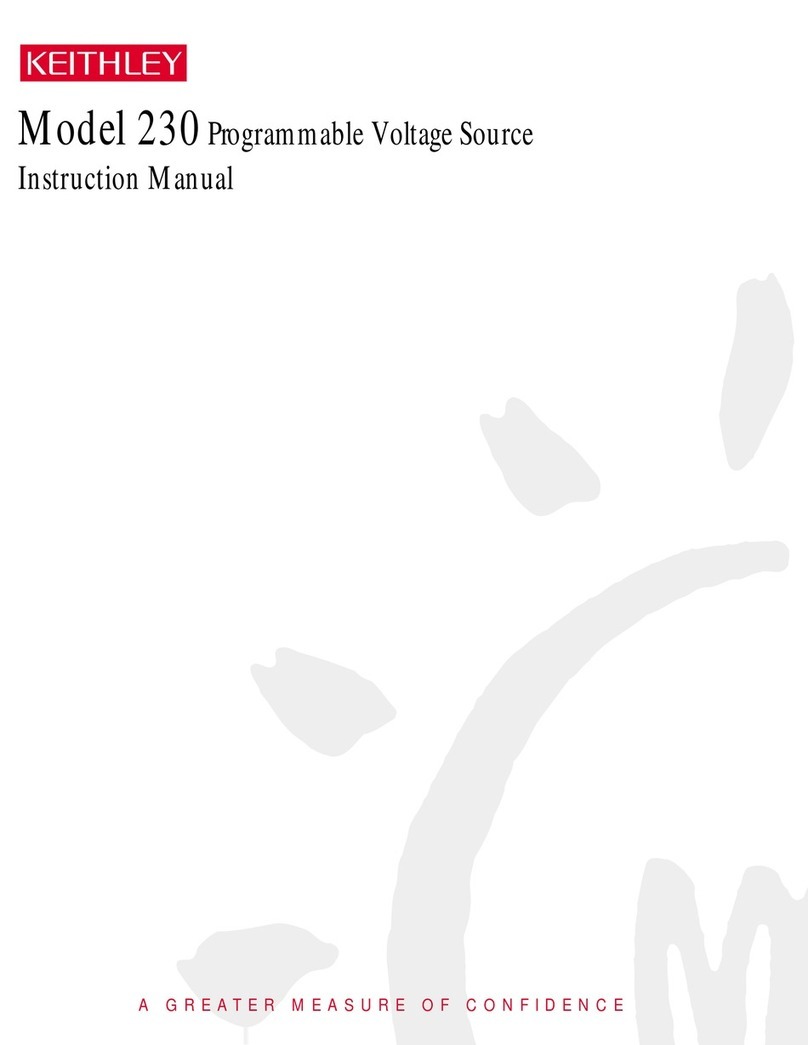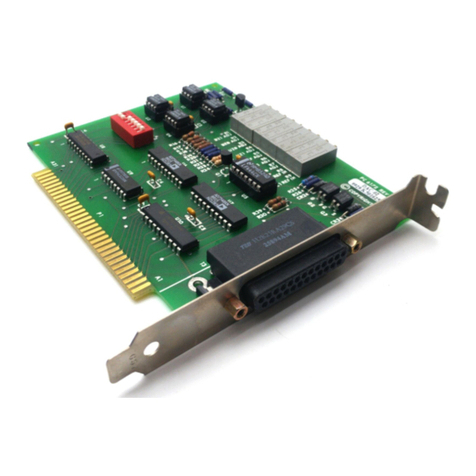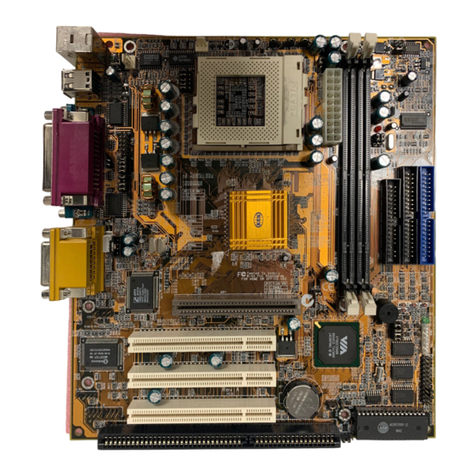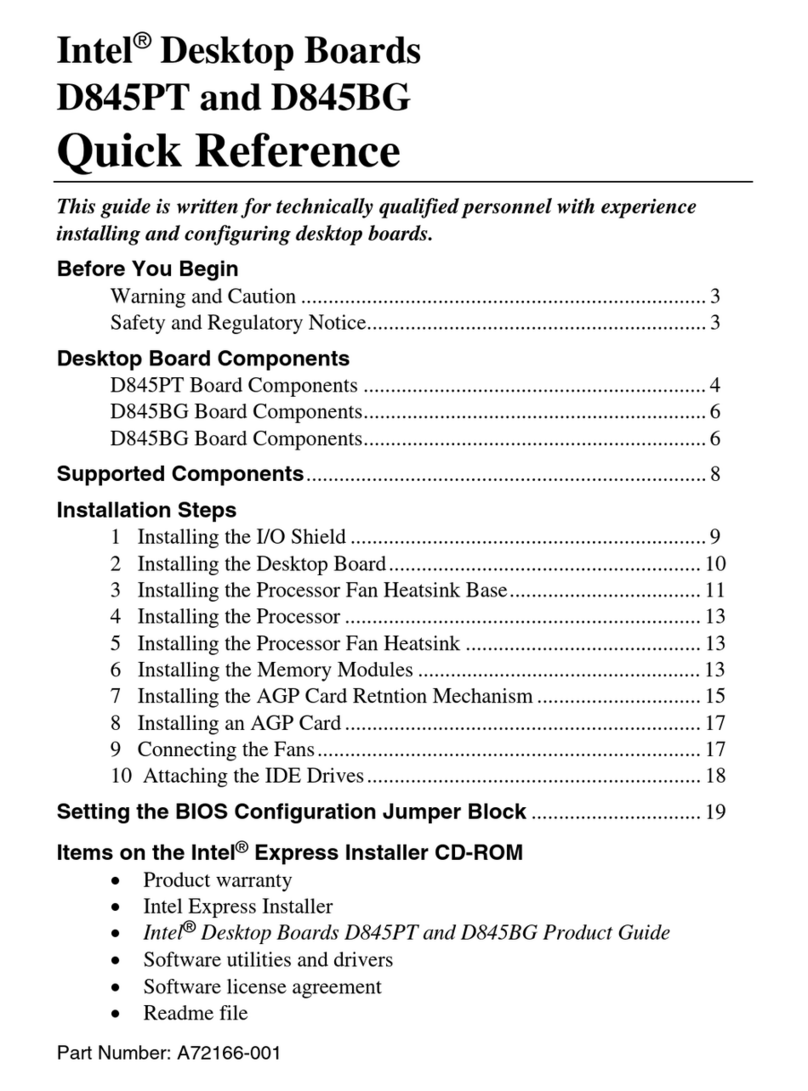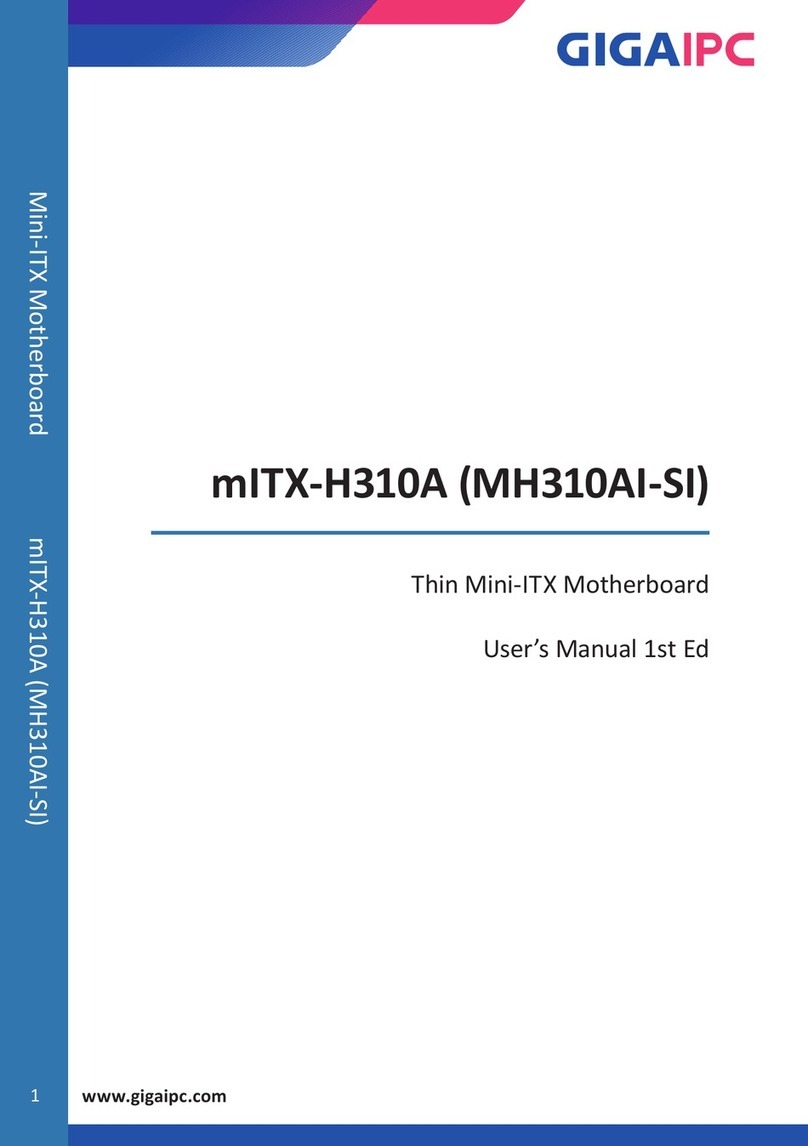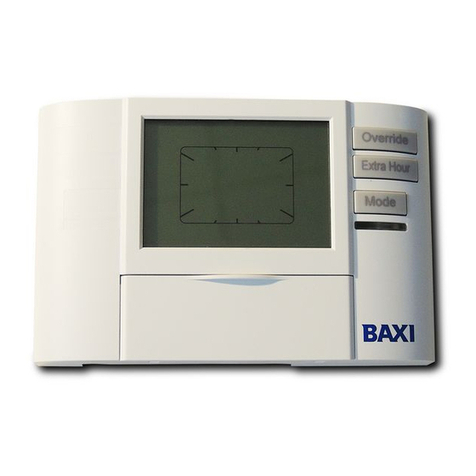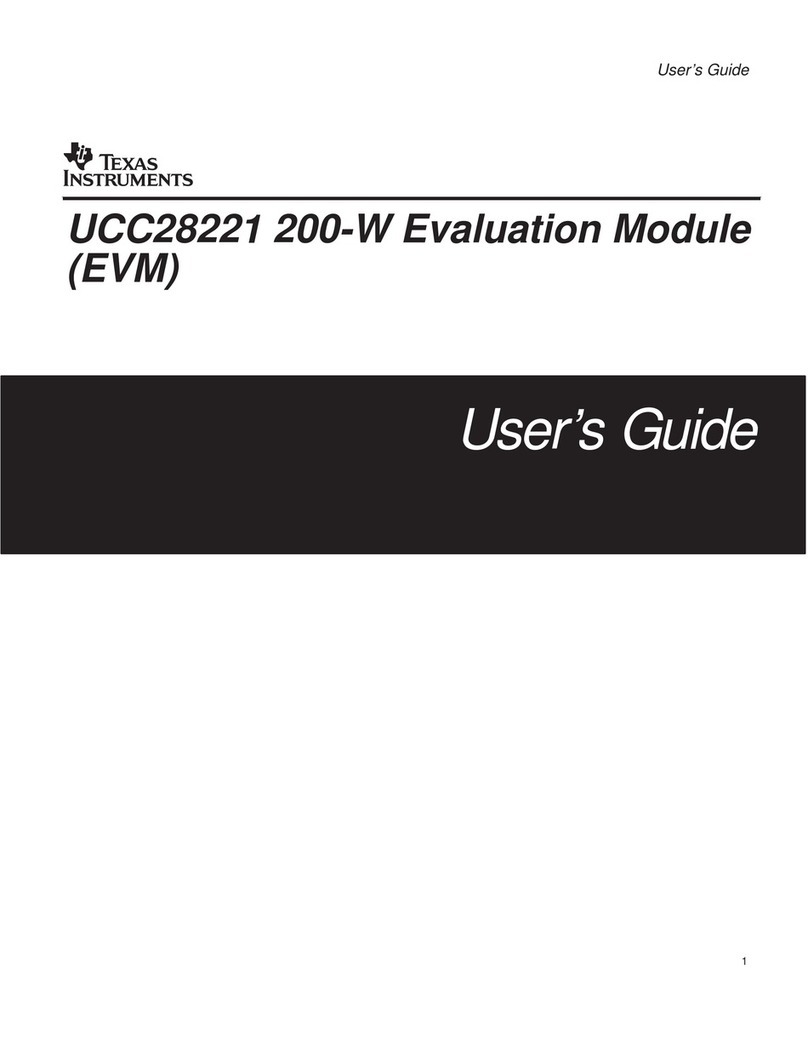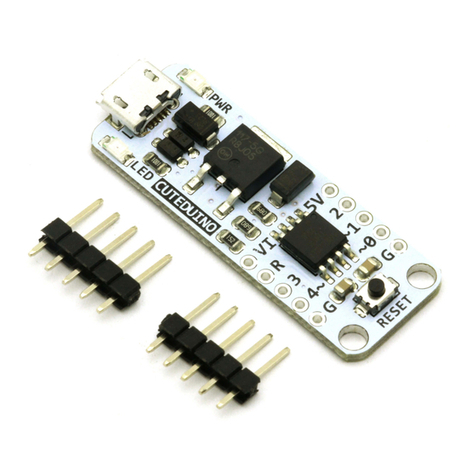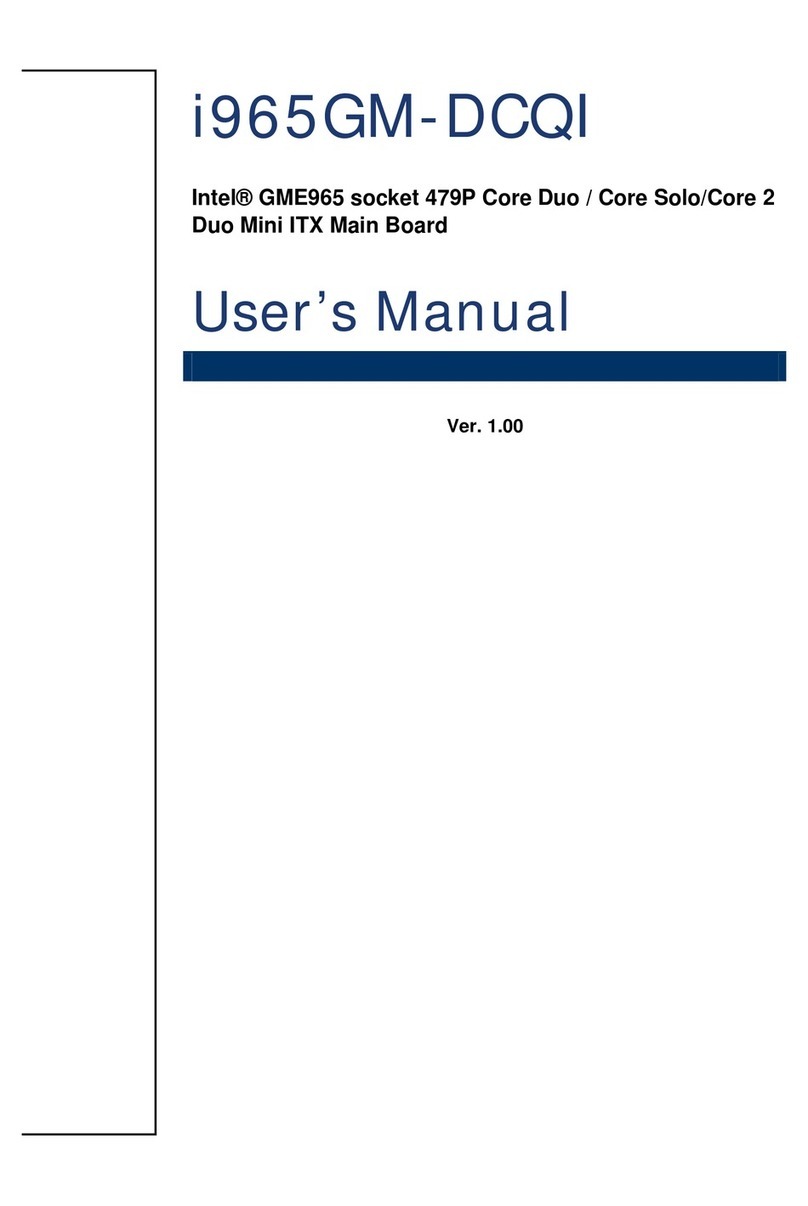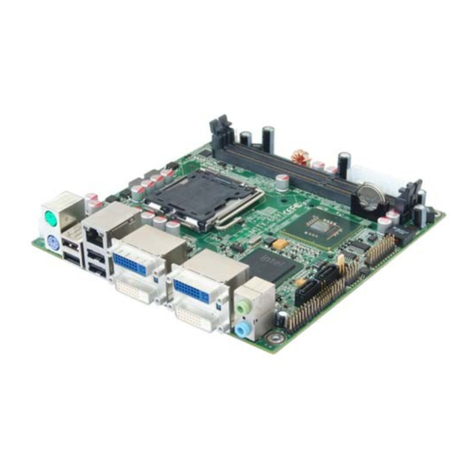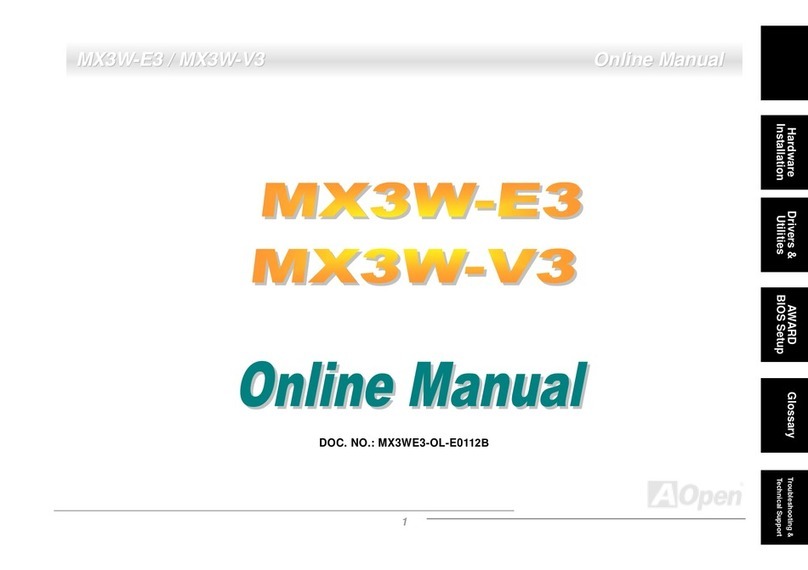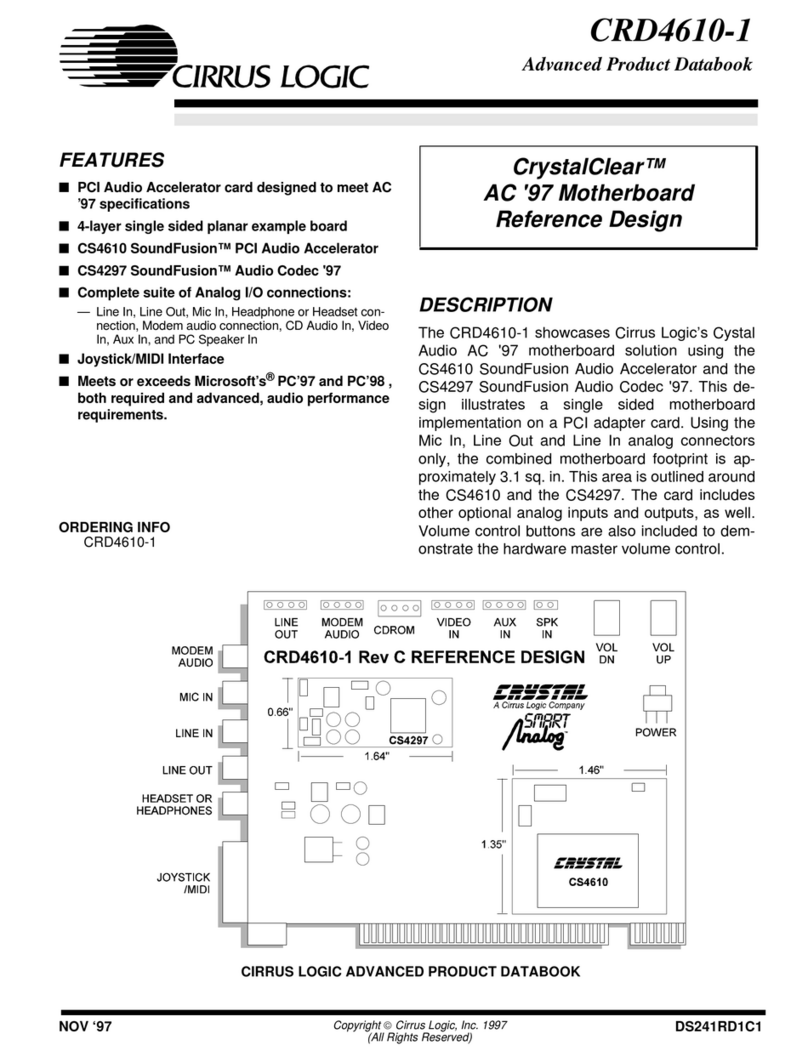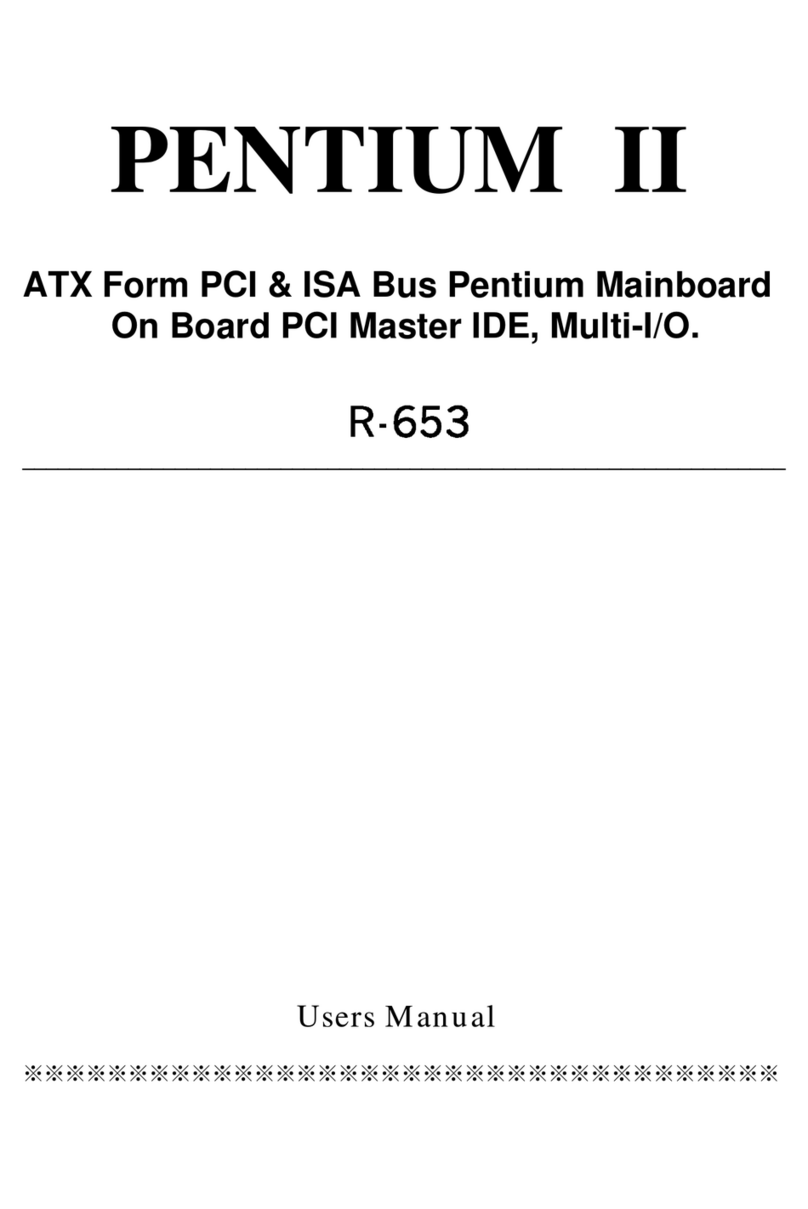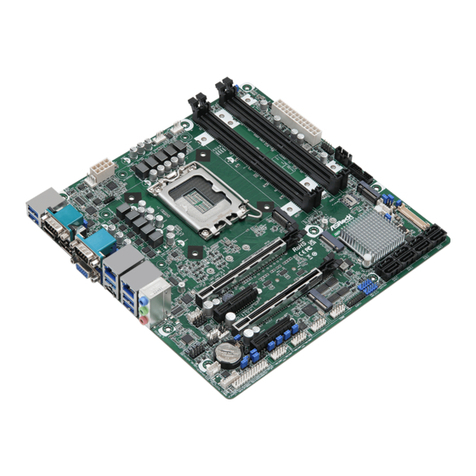Keithley 7174A User manual

-~
ARTISAN
®
~I
TECHNOLOGY
GROUP
Your definitive source
for
quality
pre-owned
equipment.
Artisan Technology
Group
Full-service,
independent
repair
center
with
experienced
engineers
and
technicians
on staff.
We
buy
your
excess,
underutilized,
and
idle
equipment
along
with
credit
for
buybacks
and
trade-ins
.
Custom
engineering
so
your
equipment
works
exactly as
you
specify.
•
Critical
and
expedited
services
•
Leasing
/
Rentals/
Demos
• In
stock/
Ready-to-ship
•
!TAR-certified
secure
asset
solutions
Expert
team
ITrust
guarantee
I
100%
satisfaction
All
tr
ademarks,
br
a
nd
names, a
nd
br
a
nd
s a
pp
earing here
in
are
th
e property of
th
e
ir
r
es
pecti
ve
ow
ner
s.
Find the Keithley 7174A at our website: Click HERE

I
nstruct
i
on
M
anua
l
Contains Operating and Servicing Information
Model 7174A
8×12 Low Current Matrix Card
7174A-901-01 Rev. A / 9-98
Artisan Technology Group - Quality Instrumentation ... Guaranteed | (888) 88-SOURCE | www.artisantg.com

WARRANTY
Keithley Instruments, Inc. warrants this product to be free from defects in material and workmanship for a period of 1 year from date of
shipment.
Keithley Instruments, Inc. warrants the following items for 90 days from the date of shipment: probes, cables, rechargeable batteries,
diskettes, and documentation.
During the warranty period, we will, at our option, either repair or replace any product that proves to be defective.
To exercise this warranty, write or call your local Keithley representative, or contact Keithley headquarters in Cleveland, Ohio.You will
be given prompt assistance and return instructions. Send the product, transportation prepaid, to the indicated service facility. Repairs
will be made and the product returned, transportation prepaid. Repaired or replaced products are warranted for the balance of the origi-
nal warranty period, or at least 90 days.
LIMITATION OF WARRANTY
This warranty does not apply to defects resulting from product modification without Keithley’s express written consent, or misuse of
any product or part. This warranty also does not apply to fuses, software, non-rechargeable batteries, damage from battery leakage, or
problems arising from normal wear or failure to follow instructions.
THIS WARRANTY IS IN LIEU OF ALL OTHER WARRANTIES, EXPRESSED OR IMPLIED, INCLUDING ANY IMPLIED
WARRANTY OF MERCHANTABILITY OR FITNESS FOR A PARTICULAR USE. THE REMEDIES PROVIDED HEREIN ARE
BUYER’S SOLE AND EXCLUSIVE REMEDIES.
NEITHER KEITHLEY INSTRUMENTS, INC. NOR ANY OF ITS EMPLOYEES SHALL BE LIABLE FOR ANY DIRECT, INDI-
RECT, SPECIAL, INCIDENTAL OR CONSEQUENTIAL DAMAGES ARISING OUT OF THE USE OF ITS INSTRUMENTS AND
SOFTWARE EVEN IF KEITHLEY INSTRUMENTS, INC., HAS BEEN ADVISED IN ADVANCE OF THE POSSIBILITY OF
SUCH DAMAGES. SUCH EXCLUDED DAMAGES SHALL INCLUDE, BUT ARE NOT LIMITED TO: COSTS OF REMOVAL
AND INSTALLATION, LOSSES SUSTAINED AS THE RESULT OF INJURY TO ANY PERSON, OR DAMAGE TO PROPERTY.
Keithley Instruments, Inc.
• 28775 Aurora Road • Cleveland, OH 44139 • 440-248-0400 • Fax: 440-248-6168 • http://www.keithley.com
CHINA: Keithley Instruments China
•Yuan Chen Xin Building, Room 705 • 12Yumin Road, Dewai, Madian • Beijing 100029 • 8610-62022886 • Fax: 8610-62022892
FRANCE: Keithley Instruments SARL
• BP 60 • 3 Allée des Garays • 91122 Palaiseau Cédex • 33-1-60-11-51-55 • Fax: 33-1-60-11-77-26
GERMANY: Keithley Instruments GmbH
• Landsberger Strasse 65 • D-82110 Germering, Munich • 49-89-8493070 • Fax: 49-89-84930759
GREAT BRITAIN: Keithley Instruments, Ltd.
• The Minster • 58 Portman Road • Reading, Berkshire, England RG3 1EA • 44-1189-596469 • Fax: 44-1189-575666
ITALY: Keithley Instruments SRL
• Viale S. Gimignano 38 • 20146 Milano • 39-2-48303008 • Fax: 39-2-48302274
NETHERLANDS: Keithley Instruments BV
• Avelingen West 49 • 4202 MS Gorinchem • 31-(0)183-635333 • Fax: 31-(0)183-630821
SWITZERLAND: Keithley Instruments SA
• Kriesbachstrasse 4 • 8600 Dübendorf • 41-1-8219444 • Fax: 41-1-8203081
TAIWAN: Keithley Instruments Taiwan
• 1FL., 85 Po Ai Street • Hsinchu, Taiwan • 886-3-572-9077 • Fax: 886-3-572-9031
Artisan Technology Group - Quality Instrumentation ... Guaranteed | (888) 88-SOURCE | www.artisantg.com

Model 7174A 8
×
12 Low Current Matrix Card
Instruction Manual
©1998, Keithley Instruments, Inc.
All rights reserved.
Cleveland, Ohio, U.S.A.
First Printing September 1998
Document Number: 7174A-901-01 Rev. A
Artisan Technology Group - Quality Instrumentation ... Guaranteed | (888) 88-SOURCE | www.artisantg.com

Manual Print History
The print history shown below lists the printing dates of all Revisions and Addenda created for this manual. The Revision
Level letter increases alphabetically as the manual undergoes subsequent updates. Addenda, which are released between Revi-
sions, contain important change information that the user should incorporate immediately into the manual. Addenda are num-
bered sequentially. When a new Revision is created, all Addenda associated with the previous Revision of the manual are
incorporated into the new Revision of the manual. Each new Revision includes a revised copy of this print history page.
RevisionA (Document Number 7174A-901-01)............................................................................ September 1998
All Keithley product names are trademarks or registered trademarks of Keithley Instruments, Inc.
Other brand and product names are trademarks or registered trademarks of their respective holders.
Artisan Technology Group - Quality Instrumentation ... Guaranteed | (888) 88-SOURCE | www.artisantg.com

Safety Precautions
The following safety precautions should be observed before using
this product and any associated instrumentation.Although some in-
struments and accessories would normally be used with non-haz-
ardous voltages, there are situations where hazardous conditions
may be present.
This product is intended for use by qualified personnel who recog-
nize shock hazards and are familiar with the safety precautions re-
quired to avoid possible injury. Read the operating information
carefully before using the product.
The types of product users are:
Responsible body
is the individual or group responsible for the use
and maintenance of equipment, and for ensuring that operators are
adequately trained.
Operators
use the product for its intended function. They must be
trained in electrical safety procedures and proper use of the instru-
ment. They must be protected from electric shock and contact with
hazardous live circuits.
Maintenancepersonnel
perform routine procedures on the product
to keep it operating, for example, setting the line voltage or replac-
ing consumable materials. Maintenance procedures are described in
the manual. The procedures explicitly state if the operator may per-
form them. Otherwise, they should be performed only by service
personnel.
Service personnel
are trained to work on live circuits, and perform
safe installations and repairs of products. Only properly trained ser-
vice personnel may perform installation and service procedures.
Exercise extreme caution when a shock hazard is present. Lethal
voltage may be present on cable connector jacks or test fixtures.The
American National Standards Institute (ANSI) states that a shock
hazard exists when voltage levels greater than 30V RMS, 42.4V
peak,or60VDCarepresent.
Agoodsafetypracticeistoexpect
thathazardousvoltageispresentinanyunknowncircuitbefore
measuring.
Users of this product must be protected from electric shock at all
times. The responsible body must ensure that users are prevented
access and/or insulated from every connection point. In some cases,
connections must be exposed to potential human contact. Product
users in these circumstances must be trained to protect themselves
from the risk of electric shock. If the circuit is capable of operating
at or above 1000 volts,
no conductive part of the circuit may be
exposed.
As described in the International Electrotechnical Commission
(IEC) Standard IEC 664, digital multimeter measuring circuits
(e.g., Keithley Models 175A, 199, 2000, 2001, 2002, and 2010) are
Installation Category II. All other instruments’ signal terminals are
Installation Category I and must not be connected to mains.
Do not connect switching cards directly to unlimited power circuits.
They are intended to be used with impedance limited sources.
NEVER connect switching cards directly to AC mains. When con-
necting sources to switching cards, install protective devices to lim-
it fault current and voltage to the card.
Before operating an instrument, make sure the line cord is connect-
ed to a properly grounded power receptacle. Inspect the connecting
cables, test leads, and jumpers for possible wear, cracks, or breaks
before each use.
For maximum safety, do not touch the product, test cables, or any
other instruments while power is applied to the circuit under test.
ALWAYS remove power from the entire test system and discharge
any capacitors before: connecting or disconnecting cables or jump-
ers, installing or removing switching cards, or making internal
changes, such as installing or removing jumpers.
Do not touch any object that could provide a current path to the
common side of the circuit under test or power line (earth) ground.
Always make measurements with dry hands while standing on a
dry, insulated surface capable of withstanding the voltage being
measured.
Artisan Technology Group - Quality Instrumentation ... Guaranteed | (888) 88-SOURCE | www.artisantg.com

Do not exceed the maximum signal levels of the instruments and ac-
cessories, as defined in the specifications and operating informa-
tion, and as shown on the instrument or test fixture panels, or
switching card.
When fuses are used in a product, replace with same type and rating
for continued protection against fire hazard.
Chassis connections must only be used as shield connections for
measuring circuits, NOT as safety earth ground connections.
If you are using a test fixture, keep the lid closed while power is ap-
plied to the device under test. Safe operation requires the use of a
lid interlock.
If a screw is present, connect it to safety earth ground using the
wire recommended in the user documentation.
The symbol on an instrument indicates that the user should re-
fer to the operating instructions located in the manual.
The symbol on an instrument shows that it can source or mea-
sure 1000 volts or more, including the combined effect of normal
and common mode voltages. Use standard safety precautions to
avoid personal contact with these voltages.
The
WARNING
heading in a manual explains dangers that might
result in personal injury or death.Always read the associated infor-
mation very carefully before performing the indicated procedure.
The
CAUTION
heading in a manual explains hazards that could
damage the instrument. Such damage may invalidate the warranty.
Instrumentation and accessories shall not be connected to humans.
Before performing any maintenance, disconnect the line cord and
all test cables.
To maintain protection from electric shock and fire, replacement
components in mains circuits, including the power transformer, test
leads, and input jacks, must be purchased from Keithley Instru-
ments. Standard fuses, with applicable national safety approvals,
may be used if the rating and type are the same. Other components
that are not safety related may be purchased from other suppliers as
long as they are equivalent to the original component. (Note that se-
lected parts should be purchased only through Keithley Instruments
to maintain accuracy and functionality of the product.) If you are
unsure about the applicability of a replacement component, call a
Keithley Instruments office for information.
To clean the instrument, use a damp cloth or mild, water based
cleaner. Clean the exterior of the instrument only. Do not apply
cleaner directly to the instrument or allow liquids to enter or spill
on the instrument.
!
Artisan Technology Group - Quality Instrumentation ... Guaranteed | (888) 88-SOURCE | www.artisantg.com

7174A 8×12 Low Current Matrix Card Specifications
MATRIX CONFIGURATION: Single 8 rows×12 columns. Expanding
the columns can be done internally by connecting the rows of
multiple 7174A cards together with coax jumpers.
CROSSPOINT CONFIGURATION: 2-pole Form A (Signal Guard).
CONNECTOR TYPE: 3-lug triax (Signal, Guard, Chassis).
MAXIMUM SIGNAL LEVEL:
Pin to Pin or Pin to Chassis: 200V. 2A carry current.
CONTACT LIFE: Cold Switching: 108closures.
OFFSET CURRENT: 100fA max., 10fA typical (with 0V applied to
inputs and outputs).
ISOLATION: Path (Signal to Signal): >2×1014Ω, 1pF.
Common (Signal to Chassis): >1014Ω, <10pF.
SETTLING TIME: <2.5s to 400fA (all pathways) after 10V applied
(typical).
CROSSTALK (1MHz, 50ΩLoad): <–70dB.
INSERTION LOSS (1MHz, 50ΩLoad): <–0.2dB typical.
3dB BANDWIDTH:
(50ΩLoad, 50ΩSource): 30MHz typical.
(1MΩLoad, 50ΩSource): 40MHz typical.
RELAY DRIVE CURRENT (per crosspoint): 17mA.
RELAY SETTLING TIME: <1ms.
ENVIRONMENT:
Offset Current and Path Isolation Specifications: 23°C, <60%
R.H.
Operating: 0° to 50°C, up to 35°C at 70% R.H.
Storage: –25° to +65°C.
MAXIMUM LEAKAGE:
Pin to Ground: 0.01pA/V. Pin to Pin: 0.005pA/V.
INSULATION RESISTANCE: 6.7×1013Ωminimum.
CAPACITANCE: (Guard Driven): Path to Ground: <10pF. Path to
Path: 1pF typical.
ACCESSORY SUPPLIED: Instruction manual and eight MCX expan-
sion cables.
ACCESSORIES AVAILABLE:
7078-TRX-TBC 3-Lug Triax to BNC Adapter
7078-TRX-T 3-Lug Triax Tee Adapter
7078-TRX-3 3-Lug Triax Cable, 0.9m (3 ft.)
7078-TRX-10 3-Lug Triax Cable, 3m (10 ft.)
7078-TBC 3-Lug Female Triax Bulkhead Connector with Cap
7078-CSHP Cable Set to Connect 7174 to HP 4145, 4155, 4156
2
2
2
2
2
2
2
2
2
2
2
2
2
2
2
2
2
2
2
2
2
2
2
2
2
2
2
2
2
2
2
2
2
2
2
2
2
2
2
2
2
2
2
2
2
2
2
2
2
2
2
2
2
2
2
2
2
2
2
2
2
2
2
2
2
2
2
2
2
2
2
2
2
2
2
2
2
2
2
2
2
2
2
2
2
2
2
2
2
2
2
2
2
2
2
2
2
2
2
2
2
2
2
2
2
2
2
2
2
2
2
2
2
2
2
2
2
2
2
2
2
2
2
2
2
2
2
2
2
2
2
2
2
2
2
2
2
2
2
2
2
2
2
2
2
22
22
22
22
22
22
22
22
22
22
22
2
2
22
22
22
22
22
22
22
22
22
22
22
2
HGCHGCHGCHGCHGCHGCHGCHGCHGCHGCHGCHGC
H
G
C
H
G
C
H
G
C
H
G
C
H
G
C
H
G
C
H
G
C
H
G
C
Columns
Rows
User
connections
and expansion
Specifications are subject to change without notice.
Artisan Technology Group - Quality Instrumentation ... Guaranteed | (888) 88-SOURCE | www.artisantg.com

Table of Contents
1 General Information
1.1 Introduction ....................................................................................................................................................... 1-1
1.2 Features ............................................................................................................................................................. 1-1
1.3 Warranty information ........................................................................................................................................ 1-1
1.4 Manual addenda ................................................................................................................................................ 1-2
1.5 Safety symbols and terms ................................................................................................................................. 1-2
1.6 Specifications .................................................................................................................................................... 1-2
1.7 Unpacking and inspection ................................................................................................................................. 1-2
1.7.1 Inspection for damage ............................................................................................................................... 1-2
1.7.2 Shipment contents ..................................................................................................................................... 1-2
1.7.3 Instruction manual ..................................................................................................................................... 1-2
1.8 Packing for shipment ........................................................................................................................................ 1-2
1.9 Optional accessories .......................................................................................................................................... 1-2
2 Operation
2.1 Introduction ....................................................................................................................................................... 2-1
2.2 Handling precautions ........................................................................................................................................ 2-1
2.3 Environmental considerations ........................................................................................................................... 2-1
2.4 Card installation and removal ........................................................................................................................... 2-2
2.5 Connections ....................................................................................................................................................... 2-2
2.5.1 Card connectors .......................................................................................................................................... 2-2
2.5.2 Recommended cables and adapters ............................................................................................................ 2-3
2.5.3 Triax banana plug adapter .......................................................................................................................... 2-4
2.5.4 General instrument connections ................................................................................................................. 2-5
2.5.5 Keithley instrument connections .............................................................................................................. 2-11
2.5.6 Typical test fixture connections ............................................................................................................... 2-17
2.6 Matrix configuration ....................................................................................................................................... 2-18
2.6.1 Switching matrix ...................................................................................................................................... 2-18
2.6.2 Path isolators ............................................................................................................................................ 2-18
2.6.3 Internal matrix expansion ......................................................................................................................... 2-21
2.7 Measurement considerations ........................................................................................................................... 2-22
2.7.1 Magnetic fields ........................................................................................................................................ 2-22
2.7.2 Electromagnetic Interference (EMI) ....................................................................................................... 2-22
2.7.3 Ground loops ........................................................................................................................................... 2-22
2.7.4 Keeping connectors clean ....................................................................................................................... 2-23
2.7.5 Noise currents caused by cable flexing ................................................................................................... 2-23
2.7.6 Shielding ................................................................................................................................................. 2-23
2.7.7 Guarding .................................................................................................................................................. 2-24
2.7.8 Matrix expansion effects on card specifications ..................................................................................... 2-24
2.8 Coaxial jumper access ..................................................................................................................................... 2-25
i
Artisan Technology Group - Quality Instrumentation ... Guaranteed | (888) 88-SOURCE | www.artisantg.com

3 Applications
3.1 Introduction ........................................................................................................................................................ 3-1
3.2 CV measurements ............................................................................................................................................... 3-1
3.2.1 Stand alone system configuration ............................................................................................................... 3-1
3.2.2 Computerized system configuration ........................................................................................................... 3-1
3.2.3 Optimizing CV measurement accuracy ...................................................................................................... 3-3
3.2.4 Basic CV test procedure ............................................................................................................................. 3-3
3.2.5 Typical CV curves ...................................................................................................................................... 3-3
3.3 Semiconductor test matrix ................................................................................................................................. 3-5
3.3.1 System configuration .................................................................................................................................. 3-5
3.3.2 Testing common-source characteristic of FETs ......................................................................................... 3-6
3.4 Resistivity measurements ................................................................................................................................... 3-7
3.4.1 Test configuration ....................................................................................................................................... 3-7
3.4.2 Test procedure ............................................................................................................................................ 3-7
3.4.3 Resistivity calculations ............................................................................................................................... 3-9
3.5 Semiconductor IV characterization .................................................................................................................... 3-9
3.5.1 Test configuration ....................................................................................................................................... 3-9
3.5.2 Cable connections ..................................................................................................................................... 3-10
4 Service Information
4.1 Introduction ........................................................................................................................................................ 4-1
4.2 Handling and cleaning precautions .................................................................................................................... 4-1
4.3 Principles of operation ........................................................................................................................................ 4-2
4.3.1 Block diagram ............................................................................................................................................ 4-2
4.3.2 ID data circuits ........................................................................................................................................... 4-2
4.3.3 Relay control .............................................................................................................................................. 4-3
4.3.4 Power-on sequence ..................................................................................................................................... 4-3
4.3.5 Isolator relays ............................................................................................................................................. 4-4
4.4 Troubleshooting .................................................................................................................................................. 4-4
4.4.1 Recommended equipment .......................................................................................................................... 4-4
4.4.2 Gaining circuit access ................................................................................................................................. 4-4
4.4.3 Troubleshooting procedure ......................................................................................................................... 4-4
4.5 Special handling of static-sensitive devices ....................................................................................................... 4-5
4.6 Performance verification .................................................................................................................................... 4-5
4.6.1 Environment conditions .............................................................................................................................. 4-5
4.6.2 Recommended test equipment .................................................................................................................... 4-5
4.6.3 Offset current verification .......................................................................................................................... 4-6
4.6.4 Path isolation verification ........................................................................................................................... 4-7
4.6.5 Path resistance verification ......................................................................................................................... 4-9
4.7 Reed pack replacement...................................................................................................................................... 4-11
5 Replaceable Parts
5.1 Introduction ........................................................................................................................................................ 5-1
5.2 Parts list .............................................................................................................................................................. 5-1
5.3 Ordering information .......................................................................................................................................... 5-1
5.4 Factory service .................................................................................................................................................... 5-1
5.5 Component layout and schematic diagram ......................................................................................................... 5-1
ii
Artisan Technology Group - Quality Instrumentation ... Guaranteed | (888) 88-SOURCE | www.artisantg.com

List of Illustrations
2 Operation
Figure 2-1 Model 7174A installation .......................................................................................................................... 2-2
Figure 2-2 Card connectors ......................................................................................................................................... 2-3
Figure 2-3 Triax connector configuration ................................................................................................................... 2-3
Figure 2-4 Triax cable preparation ............................................................................................................................. 2-4
Figure 2-5 General instrument connections ................................................................................................................ 2-6
Figure 2-6 Model 617 electrometer connections ...................................................................................................... 2-11
Figure 2-7 Model 196 DMM connections ................................................................................................................ 2-12
Figure 2-8 Model 230 voltage source connections ................................................................................................... 2-13
Figure 2-9 Model 590 CV analyzer connections ...................................................................................................... 2-14
Figure 2-10 Model 220 current source connections ................................................................................................... 2-15
Figure 2-11 Model 236/237/238 source measure unit connections ............................................................................ 2-16
Figure 2-12 Typical test fixture connections .............................................................................................................. 2-17
Figure 2-13 Equivalent circuit of test fixture connections .......................................................................................... 2-18
Figure 2-14 Matrix configuration ............................................................................................................................... 2-19
Figure 2-15 Connecting three cards for an 8
×
36 matrix ........................................................................................... 2-21
Figure 2-16 Jumper connector locations ..................................................................................................................... 2-21
Figure 2-17 Two cards in daisy chain configuration .................................................................................................. 2-22
Figure 2-18 Power line ground loops ......................................................................................................................... 2-23
Figure 2-19 Eliminating ground loops ........................................................................................................................ 2-23
Figure 2-20 Shielded and guarded .............................................................................................................................. 2-24
Figure 2-21 Guarded circuit ........................................................................................................................................ 2-24
Figure 2-22 Coaxial jumper access ............................................................................................................................. 2-25
3 Applications
Figure 3-1 Stand alone CV system configuration ........................................................................................................ 3-2
Figure 3-2 Computerized CV system configuration .................................................................................................... 3-2
Figure 3-3 Typical quasistatic CV curve generated by Model 595 ............................................................................. 3-4
Figure 3-4 Typical high-frequency CV curve generated by Model 590 ...................................................................... 3-4
Figure 3-5 Semiconductor test matrix ......................................................................................................................... 3-5
Figure 3-6 System configuration for measuring common-emitter characteristics ....................................................... 3-6
Figure 3-7 Typical common-source FET IV characteristics ........................................................................................ 3-6
Figure 3-8 Resistivity test configuration ..................................................................................................................... 3-7
Figure 3-9 Resistivity measurement conventions ........................................................................................................ 3-8
Figure 3-10 Multi-unit test system using Models 236 and 237 source measure units ................................................. 3-10
iii
Artisan Technology Group - Quality Instrumentation ... Guaranteed | (888) 88-SOURCE | www.artisantg.com

4 Service Information
Figure 4-1 Model 7174A block diagram ...................................................................................................................... 4-2
Figure 4-2 ID data timing ............................................................................................................................................. 4-3
Figure 4-3 Offset verification test connections ............................................................................................................ 4-6
Figure 4-4 Connections for path isolation verification ................................................................................................ 4-7
Figure 4-5 Triaxial cable preparation ........................................................................................................................... 4-8
Figure 4-6 Connections for path resistance verification .............................................................................................. 4-9
Figure 4-7 Shorting measurement paths using triax tee adapter ................................................................................ 4-10
Figure 4-8 Cross point relays ..................................................................................................................................... 4-12
Figure 4-9 Isolator relays ........................................................................................................................................... 4-13
iv
Artisan Technology Group - Quality Instrumentation ... Guaranteed | (888) 88-SOURCE | www.artisantg.com

List of Tables
2 Operation
Table 2-1 Recommended cables and adapters ............................................................................................................ 2-3
Table 2-2 Parts for special triaxial cable .................................................................................................................... 2-4
Table 2-3 Column numbering by slot and unit ......................................................................................................... 2-20
3 Applications
Table 3-1 CV test crosspoint summary ...................................................................................................................... 3-3
Table 3-2 Crosspoint summary for resistivity measurements .................................................................................... 3-9
4 Service Information
Table 4-1 Recommended troubleshooting equipment ................................................................................................ 4-4
Table 4-2 Troubleshooting procedure ........................................................................................................................ 4-4
Table 4-3 Recommended verification equipment ...................................................................................................... 4-5
5 Replaceable Parts
Table 5-1 Model 7174A electrical parts list ................................................................................................................5-3
Table 5-2 Model 7174A mechanical parts list ........................................................................................................... 5-4
v
Artisan Technology Group - Quality Instrumentation ... Guaranteed | (888) 88-SOURCE | www.artisantg.com

1
General Information
1-1
1.1 Introduction
This section contains general information about the Model
7174A Low Current Matrix Card. The Model 7174A Low
Current Matrix Card is designed for semiconductor research,
development, and production applications that require high
quality and performance switching I-V (current versus volt-
age) and C-V (capacitance versus voltage) signals. The
model 7174A is ideal for use with Keithley Model 236
Source Measure Unit for semiconductor testing and other
low current switching applications. Model 237 and Model
238 Source Measure Units can also be used below the maxi-
mum signal level (200V, 2A carry) of the Model 7174A Low
Current Matrix Card (for full specifications, refer to para-
graph 1.6). The Model 7174A also can be used with Models
590 and 595 C-V instruments.
Section 1 is arranged in the following manner:
1.2 Features
1.3 Warranty information
1.4 Manual addenda
1.5 Safety symbols and terms
1.6 Specifications
1.7 Unpacking and inspection
1.8 Packing for shipment
1.9 Optional accessories
1.2 Features
Key features of the Model 7174A Low Current Matrix Card
include:
• Eight row by twelve column (8
×
12) switching matrix
configuration, with signal and guard switched at each
crosspoint
• Paths have offset currents of less than 100fA with typi-
cal offset currents of 50fA
• Maximum Leakage Currents:
Pin to Ground -- 0.01 pA/V
Pin to Pin -- 0.005 pA/V
• 3-lug Triaxial Connectors (Signal, Guard, Chassis) for
all row and columns allow guarding of each signal path-
way, minimizing effects of stray capacitance, leakage
current, and leakage resistance
• Model 7174A cards can be connected together inter-
nally using the supplied SMB to SMB cables (jumpers)
to expand the number of columns in the matrix.
1.3 Warranty information
Warranty information is located on the inside front cover of
this manual. Should your Model 7174A require warranty
service, contact your Keithley representative or authorized
repair facility in your area for further information.
Artisan Technology Group - Quality Instrumentation ... Guaranteed | (888) 88-SOURCE | www.artisantg.com

General Information
1-2
1.4 Manual addenda
Any improvements or changes concerning the matrix card or
manual will be explained in an addendum included with the
unit. Be sure to note these changes and incorporate them into
the manual before using or servicing the unit.
1.5 Safety symbols and terms
The following symbols and terms may be found on an instru-
ment or used in this manual.
The symbol on an instrument indicates that the user
should refer to the operating instructions located in the in-
struction manual.
The symbol on an instrument shows that high voltage
may be present on the terminal(s). Use standard safety pre-
cautions to avoid personal contact with these voltages.
The
WARNINGS
heading used in this manual explains dan-
gers that might result in personal injury or death. Always
read the associated information very carefully before per-
forming the indicated procedure.
The
CAUTION
heading used in this manual explains haz-
ards that could damage the matrix card. Such damage may
invalidate the warranty.
1.6 Specifications
Model 7174A specifications may be found at the front of this
manual. These specifications are exclusive of the matrix card
file specifications, which are located in the Model 707A
Switching Matrix manual.
1.7 Unpacking and inspection
1.7.1 Inspection for damage
If you ordered the Model 7174A separately from a system,
carefully unpack it from its shipping carton and inspect the
card for any obvious signs of physical damage. Report any
such damage to the shipping agent immediately. Save the
original packing carton for possible future reshipment.
1.7.2 Shipment contents
The following items are included with every Model 7174A
order:
• Model 7174A Low Current Matrix Card.
• Model 7174A Instruction Manual.
• Coaxial jumper cables Model CA-121A (8) for matrix
expansion.
• Additional accessories as ordered.
1.7.3 Instruction manual
The Model 7174A Instruction Manual is three-hole drilled so
that it can be added to the system three-ring binder. After
removing the plastic wrapping, place the manual in the
binder after the mainframe instruction manual. Note that a
manual identification tab is included and should precede the
matrix card instruction manual.
If an additional manual is required, order the manual pack-
age (Keithley part number 7174A-901-00). The manual
package includes an instruction manual and any pertinent
addenda.
1.8 Packing for shipment
Should it become necessary to return the Model 7174A for
repair, carefully pack the card in its original packing carton
or the equivalent, and include the following information:
• Advise as to the warranty status of the matrix card.
• Write ATTENTION REPAIR DEPARTMENT on the
shipping label.
• Fill out and include the service form located at the back
of this manual.
1.9 Optional accessories
Cables
Model 7078-TRX-3 —
A 0.9 m (3 ft.) triaxial cable termi-
nated at both ends with 3-slot male triax connectors. This
type of cable is also available in 10 ft. (Model 7078-TRX-10)
and 20 ft. (Model 7078-TRX-20) lengths.
Model CA-93-1 —
BNC to right angle SMB (coaxial) cable.
!
Artisan Technology Group - Quality Instrumentation ... Guaranteed | (888) 88-SOURCE | www.artisantg.com

General Information
1-3
Model 7078-CSHP —
Is a cable set containing:
Eight 10 ft. (3m) cables — Cables to connect the Model
7174A to a HP-4145 Semiconductor ParameterAnalyzer.
Four BNC to triax adapters — Used with eight cables
listed above
Four 3 slot triax cables— Cable set to connect the Model
7174A to Source Measurement Units
Four BNC to BNC coax cables —Adapt the measurement
and source modules in the HP-4145 to the connectors of
the Model 7174A.
Adapters
Model 7078-TRX-TBC —
A 3-lug female triax bulkhead
connector (with cap). Use this connector for custom applica-
tions and interface connections such as test fixtures.
Model 7078-TRX-T —
3-slot male to dual 3-lug female
triax tee adapter.
Model 237-BAN-3 —
3-slot male triax to male banana plug.
Model 237-ALG-2 —
3-slot male triax to alligator clips.
Model 7078-TRX-BNC —
3-slot male triax to BNC
adapter, connections to center and inner shell. For non-
guarded applications, use Model 7078-TRX-GND.
Model 6171 —
3-slot male triax to 2-lug female triaxial
adapter.
Tools
Model 9172-314 —
A tool designed to remove and install
internal coaxial jumpers between adjacent Model 7174A
Low Current Matrix Cards.
Artisan Technology Group - Quality Instrumentation ... Guaranteed | (888) 88-SOURCE | www.artisantg.com

2
Operation
2-1
2.1 Introduction
WARNING
The installation and operation proce-
dures in this section are intended for use
only by qualified service personnel. Do
not perform these procedures unless
qualified to do so. Failure to recognize
and observe normal safety precautions
could result in personal injury or death.
This section contains information on matrix card connec-
tions, installation and matrix programming, and is arranged
as follows:
2.2 Handling precautions —
Discusses precautions that
should be taken when handling the card to avoid con-
tamination that could degrade performance.
2.3 Environmental considerations —
Outlines environ-
mental aspects of using the Model 7174A.
2.4 Card installation and removal —
Details installation
in and removal from the Model 707A Switching
Matrix.
2.5 Connections —
Discusses card connectors, cables
and adapters, and typical connections to other
instrumentation.
2.6 Matrix configuration —
Discusses the switching
matrix, as well as matrix expansion by connecting two
or more cards together.
2.7 Measurement considerations —
Reviews a number
of considerations when making low-level current and
capacitance measurements.
2.8 Coaxial jumper access —
Provides information on
jumper removal.
2.2 Handling precautions
To maintain high impedance isolation, care should be taken
when handling the matrix card to avoid contamination from
such foreign materials as body oils. Such contamination can
substantially lower leakage resistance, degrading perfor-
mance. The areas of the card that are most sensitive to con-
tamination are those associated with Teflon® insulators. To
avoid any possible contamination, always grasp the card by
the handle or the card edges. Do not touch board surfaces,
components, or card edge connectors.
Dirt and other particle build-up over a period of time are
other possible sources of contamination. To avoid this prob-
lem, operate the mainframe and matrix card only in a clean
environment. If contamination is suspected, clean the card as
discussed in Section 4.
2.3 Environmental considerations
For rated performance, the card should be operated within
the temperature and humidity limits given in the specifica-
tions at the front of this manual.
Artisan Technology Group - Quality Instrumentation ... Guaranteed | (888) 88-SOURCE | www.artisantg.com

Operation
2-2
2.4 Card installation and removal
Before making connections, the Model 7174A should be
installed within the Model 707A Switching Matrix, as sum-
marized below. Figure 2-1 shows the installation procedure.
WARNING
Turn offthe systempower beforeinstall-
ing or removing matrix cards.
NOTE
The coaxial jumpers used to expand the
matrix with two or more Model 7174A
cards can not be installed before card
insertion; an access door on top of the
mainframe allows access to the connectors
after the card is installed.
1. Before installing the card, make sure the access door on
top of the Model 707A Switching Matrix is fully closed
and secured. The access door contains tracks for the card
slots and must be in place to properly install the card.
CAUTION
Do not touch the card surfaces or any
components to avoid contamination
that could degrade card performance.
Model 707A
Switching Matrix
Model 7174A Low
Current Matrix Card
Figure 2-1
Model 7174A installation
2. With one hand grasping the handle, and the other hold-
ing the bottom of the card, line up the card with the
tracks in the desired slot. Make certain that the compo-
nent side of the card is facing the fan on the mainframe.
3. Slide the card into the mainframe until it is properly
seated in the edge connectors at the back of the slot.
Once the card is properly seated, secure it to the main-
frame by finger tightening the spring-loaded screws.
WARNING
Themountingscrewsmustbesecuredto
ensure proper chassis ground connec-
tions between the card and the main-
frame. Failure to properly secure this
ground connection may result in per-
sonal injury or death due to electric
shock.
4. To remove a card, first turn off the system power. Dis-
connect all external and internal jumper cables (internal
cables can be reached through the access door). Loosen
the mounting screws, then pull the card out of the main-
frame by the handle. When the back edge of the card
clears the mainframe, support it by grasping the bottom
edge near the back or back edge.
2.5 Connections
Card connectors, recommended cables and adapters, and
typical connections to test instruments are discussed in the
following paragraphs.
2.5.1 Card connectors
The card connectors are shown in Figure 2-2. Each pin is
equipped with a 3-lug triax connector. As shown in Figure
2-3, the center conductor is signal, the inner shield is guard,
and the outer shield is chassis ground.
CAUTION
Do not exceed 200V between any two
pins or between any pin and chassis.
The Model 7174A has 12 columns (labeled 1 through 12)
and 8 rows (labeled A through H).
Artisan Technology Group - Quality Instrumentation ... Guaranteed | (888) 88-SOURCE | www.artisantg.com

Operation
2-3
1
2
3
4
5
6
7
8
9
10
11
12
A
B
C
D
E
F
G
H
KEITHLEY 7174A
8x12LOW
CURRENT MATRIX
COLUMNS
ROWS
SIGNAL
GUARD
200V PK
200V PK
200V PK
WARNING:
TIGHTEN MOUNTING SCREWS
TO ENSURE PROPER
CHASSIS GROUND
!
MADE IN U.S.A.
Caution:Remove internal row
jumpers before removing
card.
Carrying
Handle
Mounting
Screw
Mounting
Screw
Figure 2-2
Card connectors
2.5.2 Recommended cables and adapters
Table 2-1 summarizes the cables recommended for use with
the Model 7174A. Equivalent user-supplied items may be
substituted as long as they are of sufficient quality (low offset
current, high leakage resistance). Using substandard cables
and connectors may degrade the integrity of the measure-
ments made. See paragraph 2.7 for a discussion of measure-
ment considerations.
Table 2-1
Recommended cables and adapters
Model Description
7078-TRX-x
237-BAN-3
237-ALG-2
7078-TRX-BNC
7078-TRX-GND
7078-TRX-T
6171
CA-93-1
3-slot male triax connectors on
both ends (x=3, 10 or 20 ft.)
3-slot male triax to male banana
plug
3-slot male triax to alligator clips
3-slot male triax to BNC adapter,
connections to center and inner
shell
3-slot male triax to BNC adapter,
connections to center and outer
shell
3-slot male to dual 3-lug female
triax tee adapter
3-slot male triax to 2-lug female
triax adapter
BNC to right angle SMB cable
Chassis
Ground
200V
Peak
Guard
200V Peak
Signal
200V
Peak
Caution:Do not exceed maximum
voltage levels shown.
Figure 2-3
Triax connector configuration
Artisan Technology Group - Quality Instrumentation ... Guaranteed | (888) 88-SOURCE | www.artisantg.com

Operation
2-4
2.5.3 Triax banana plug adapter
For instruments that use banana jacks, you need a triax cable
terminated with a 3-slot male triax and a single banana plug.
Use the Model 237-BAN-3 or prepare a special cable as out-
lined below
(Special triax to banana plug cable prepara-
tion)
using the parts listed in Table 2-2.
Figure 2-4 shows the conductors and insulation layers of a
triaxial cable. These layers must be carefully stripped back,
cleaned thoroughly and insulated with high insulation resis-
tance material such as Teflon
to maintain the integrity of
the cable and measurement system. With the Model 237-
BAN-3, the center conductor of the triax is connected to the
banana plug. The inner and outer shields have no connection.
With the special cable shown in Figure 2-4, the inner shield
is shorted to the center conductor. Which cable to use
depends on your application. The length of unshielded con-
ductor that is connected to the banana plug should be mini-
mized to maintain signal integrity. The topic of signal
integrity is also discussed in paragraph 2.7 Measurement
considerations.
Note that you can use either an unterminated triax cable, or
cut a dual-connector cable (7078-TRX-10) in half to con-
struct two special cables.
Special triax to banana plug cable preparation
The following steps outline a procedure for installing a
banana plug on the end of a triaxial cable (with inner shield
shorted to center conductor).
1. Using a knife, cut and strip back the jacket about 1-1/2
inches.
2. Remove the outer insulation, then cut away the outer
shield as far as the insulation is stripped as shown in Fig-
ure 2-4(A).
3. Carefully strip away the insulation over the inner shield
one inch, then cut the inner shield and guard wire off
even with the stripped insulation as shown in Figure
2-4(B).
4. Strip the insulator back 1/2 inch, then twist the strands
of the conductor together as shown in Figure 2-4(C).
5. Unscrew the cover from a banana plug, then slide the
cover over the conductor.
6. Insert the stripped center conductor through the hole in
the body of the banana plug, then wrap the wire around
the plug body as shown in Figure 2-4(D).
7. Screw on the plastic cover as shown in Figure 2-4(E).
Make certain the wire is secure by gently pulling on the
plug.
Table 2-2
Parts for special triaxial cable
Keithley part or
model number Description
7078-TRX-3 triax cable*
BG-10-2
Triax cable terminated with
3-slot male triax connectors
Red banana plug
*One connector must be cut off 1"
3/4"
Cut Cut
(A) Cut off insulation with knife.
Cut off outer shield.
(B) Strip insulation off inner shield.
(D) Insert wires into hole and wrap around body.
(E) Screw on plastic cover.
(C) Twist inner shield then strip inner conductor.
Twister inner shield and center conductor together,
slip on plastic cover.
Insulation Over
Inner Shields
Figure 2-4
Triax cable preparation
Artisan Technology Group - Quality Instrumentation ... Guaranteed | (888) 88-SOURCE | www.artisantg.com
Table of contents
Other Keithley Motherboard manuals
